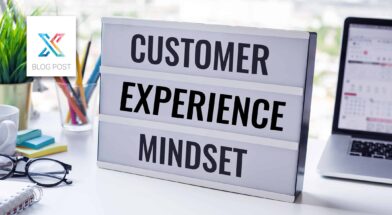In today's competitive marketplace, leading professional services firms rely on customer feedback to regularly check the pulse of their clients. Harnessing the power of customer feedback can be the key differentiator in shaping your services you provide, and the overall customer experience you deliver.
Types of Customer Feedback
Customer feedback comes from a range of sources, and there are also different types. These forms of feedback might feature more than others, depending on the type of organization you run. To improve how your firm leverages feedback, here are the four types.
Note that there’s often a crossover between different feedback types.
Structured, Solicited Customer Feedback
Structured and solicited customer feedback originates from outreach programs initiated by your company to support its future goals.
Examples of these types of feedback include:
- Electronic surveys
- Comment cards
- Net Promoter Score (NPS) surveys
- Interviews
- Focus groups
Programs that result in structured, solicited feedback are best used to see how your brand performs at a high level.
Structured, Unsolicited Customer Feedback
Structured, unsolicited customer feedback can be sourced from operational data. Gathering information from your clients while they interact with you is the key to finding out what your target market truly thinks about the experience you’re providing.
Client Savvy’s intuitive tools support you in sourcing, organizing, and reporting data from your customer interactions.
Unstructured, Solicited Customer Feedback
Unstructured, solicited feedback is a freeform type of feedback driven by your customers. An example of customer feedback that’s unstructured and solicited is an open-text response on a survey.
Unstructured, Unsolicited Customer Feedback
Again, this type of feedback is freeform in nature, but it originates from venues not under your control. Most business leaders agree that this is the most valuable feedback for learning what a client really thinks about your customer service team or the latest product.
This type of feedback can include:
- Social media mentions
- Third-party platform reviews
- Chat conversation queries
While valuable, all four types of feedback provide golden opportunities for your team to discover where it’s excelling and falling short.
Here are our top 10 benefits of client feedback for improved CX Programming:
1. Identify Raving Fans and Promoters
Begin by identifying and quantifying your “raving fans.” Raving fans are important because they want to see you succeed. They have an emotional attachment to your company and your employees. Most likely, your values align with your raving fans, so, you want to find more clients like them. Raving fans are easier to serve and you tend to have higher margins on the work you do with them. Raving fans will help you find others like them. They’re willing to have a conversation to let you know what your company does well and help you identify others within their company and their professional network who will value your work like the work you’ve done for them. As such, they become an invaluable source of feedback and referrals.
2. Get More Referrals with Customer Feedback
We wrap up all feedback requests with the Net Promoter Score (NPS) question, “How likely are you to recommend us to a colleague or peer?” A "promoter" will give a score of 9 or 10. While all “promoters” are not “referrers,” they are willing to engage in a conversation about referrals. As such, it is incumbent upon the person who has a relationship with this respondent to let them know you appreciate their willingness to refer and to take them through the referral process. Referrals will not happen if you don’t ask, so don’t let a “promoter” go to waste.
3. Verify Customer Expectations
Know if you’re meeting expectations so you can address misperceptions early in the project when you can adjust or take action to meet those expectations. Successful professionals are more interested in relationships than transactions. Most projects, engagements, and cases last months. If they are mutually beneficial, there’s a desire for the relationship to carry on for years. As such, it’s important to check in multiple times over the course of a project to ensure expectations are being met. If not, you need to address any misalignment or miscommunication, so you meet client expectations by the time the project wraps up and you send an invoice. Doing so results in better long-term relationships and more timely payment of invoices.
4. Identify Unspoken Customer Concerns
Enables clients to raise a concern without a face-to-face confrontation. A lot of customers, especially those with whom you have long-term relationships, are hesitant to raise their hand if something is not going as expected. They don’t want to get anyone in trouble, especially their friends. However, if they don’t let you know something is out of line, you and your client manager may be unaware of the problem. The customer feedback tool gives clients the opportunity to “raise their hand” by moving the expectation of the performance slider or by adding a comment, without having to confront anyone. It’s important to monitor slight variations, and all comments, and engage in a non-confrontational conversation to identify the cause of the concern, regardless of how minor. Early and proactive action on minor issues prevents escalation to major issues.
5. Process Focus
A client feedback program helps keep the focus on the process, not on a person. One of the challenges and benefits of client feedback management is helping clients and employees understand the methodology is based on identifying flaws in processes and communications – not people. A score that fails to “meet expectations,” indicates a failure in some aspect of the project -- scope, execution, miscommunication, or misunderstood expectations. Focusing on processes, expectations, and communications eliminates people blaming people and provides the foundation for all stakeholders to focus on solving the disconnects.
6. Participate in Active Listening
Response to all feedback lets clients know you hear them. It’s important to respond to all feedback in a timely manner – we recommend 48 hours. Even positive feedback. Let the person providing feedback know you value their feedback. It’s even more important to be responsive when you are not meeting expectations. Let the client know you heard them and you want to work with them to address their concerns. By responding quickly, you earn your client’s trust and they see you as responsive to their needs and concerns.
7. Capture Customer Insights
Comments provide tremendous insights into what the client is thinking. A slight up or down adjustment of the score will provide an indicator of what your client is thinking. The comments in the feedback portion of the response device add a lot more insight and clarity. In your response back to the client, you can directly address their concern – not with a correction or solution but a request to schedule a time to meet and discuss their specific concern.
8. Improve Customer Communication
The request for feedback opens the door for more communication and deeper relationships. Deeper relationships build more trust, which leads to more business and referrals. The results of the feedback you receive are not nearly as valuable as the conversations and connections the results facilitate. By learning what your clients like and dislike, you can refine how you serve the client. As one CX leader said, “I’d rather know what day of the month my client would like to get our invoice rather than what day his step-son was born.”
9. Response to Change
The benefits of Feedback give you the opportunity to know if expectations have changed when stakeholders change. When projects, audits, or cases last more than a few months, the players may change – on the client-side and the provider-side. Another benefit of frequent client feedback is to monitor how expectations change as people change. The initiator of the project may be a stickler for keeping everything at or under budget. Then a new project leader wants to bring the project in early and will pay more to do so. It’s important to identify different expectations from new stakeholders as early as possible.
10. Better Business Outcomes for Your Firm
You achieve better partnership outcomes with clients and employees. This results in long-term, mutually beneficial, and higher-margin relationships. The more you work with a client the more you get to know them and vice versa. The same is true with an employee. A “first-time” client is four times more likely to “churn” than a client with two or more projects. And, happy clients create 42% more lifetime profit. By identifying who your ideal clients are through client feedback, you can target similar clients to focus your new business efforts on, thereby making your firm more profitable and your employees happier.
In conclusion, customer feedback stands as a cornerstone of successful business strategies, offering invaluable insights that drive innovation, improve customer satisfaction, and foster long-term loyalty. By cultivating a culture of listening and responsiveness, professional services firms can adapt and thrive in an ever-changing market landscape.





